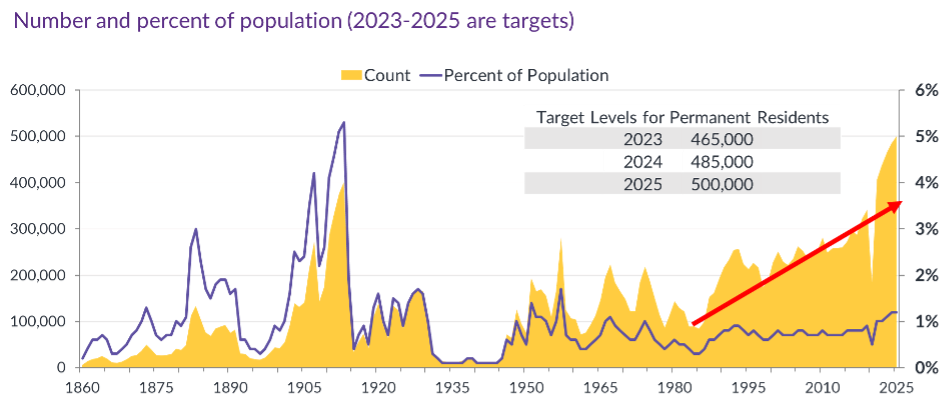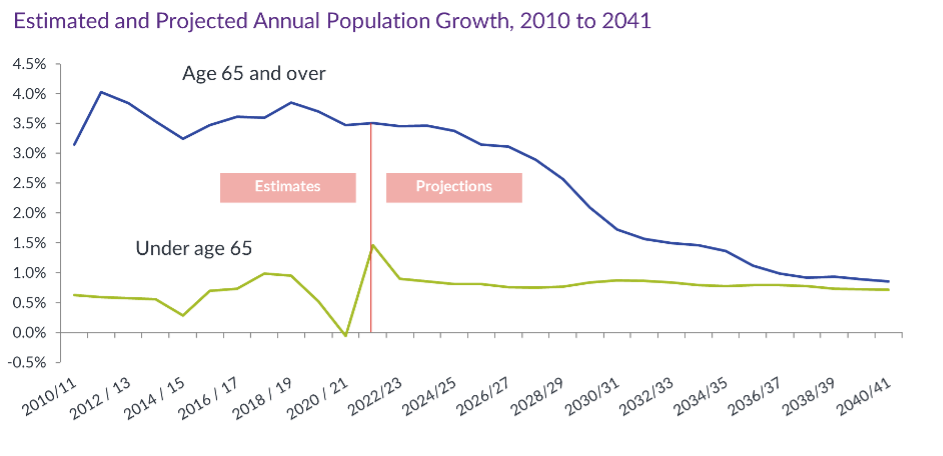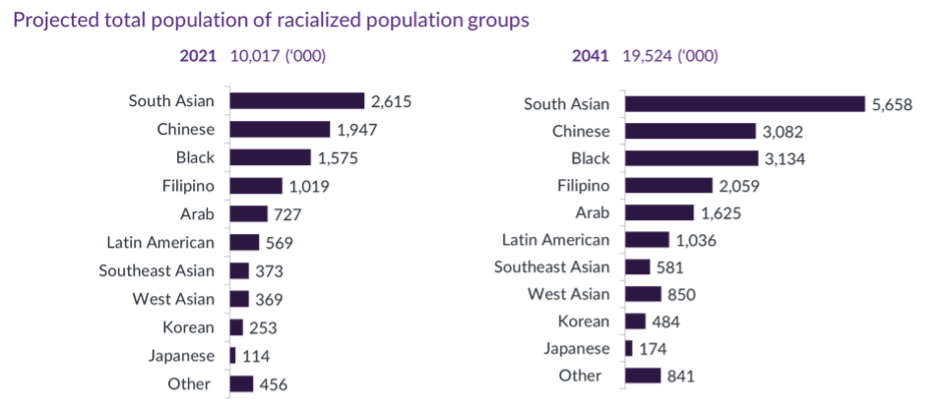Navigating the flux: Canada’s changing demographic landscape
The future of Canadian demographics: Immigration, population growth, urban development and more. Data sourced from Statistics Canada, Immigration, Refugees and Citizenship Canada and analyzed by Environics Analytics.
As the saying goes, the only constant in life is change.
Today, we find ourselves at the precipice of profound shifts taking place across Canada – a country renowned for its diversity and welcoming spirit. A new demographic landscape is being painted, leaving us with questions about what the future holds.
A key question to ponder is: How is Canada’s demographic landscape changing?
In search of answers, a series of realizations have surfaced that provide a glimpse into the future of this vast nation.
A new chapter in immigration
The rate of permanent resident immigration is likely to remain high. By 2025, Canada will welcome the largest number of permanent residents since the early 1900s. This upswing is set to reinforce Canada's image as a welcoming hub for immigrants seeking a fresh start. While there is a cloud of uncertainty looming over the future of temporary immigration, it is probable that it will be scaled down from the levels it was at during 2022 and 2023.
© Environics Analytics
Urbanization and geographical shifts
High population growth is a trend that Canada will likely continue to witness. This growth is not confined to the bustling hubs but also extends to growing mid-sized metropolitan areas. These mid-sized metropolitan areas are quietly emerging as the new growth leaders and are fast becoming the epicentre of Canada's demographic shift. Selected smaller urban areas are also experiencing notable growth, highlighting the widespread nature of evolving demographic patterns.
The growing elderly population
On the flip side, we are also witnessing consistent growth amongst the older population, especially those aged 75 and over. For the next two decades, the aging population will continue to have a stronger growth rate than the population under 65. This is set to have far-reaching implications for healthcare, social services and more.
© Environics Analytics
A tapestry of cultures
Canada is renowned for its multicultural fabric, and this element will become even more pronounced. We’ll continue to see racial diversity on the rise, which will enrich the cultural dialogue, foster inclusivity, and present opportunities for growth and innovation. South Asians have already become the largest visible minority group in Canada, and this group is projected to double in the next 20 years.
© Environics Analytics
Economic challenges
The changing economic landscape paints a picture of resilience in the face of adversity. However, the transitions are not without their challenges. In the short-term, Canadians may face low real income growth. Simultaneously, housing costs and mortgage renewals are anticipated to exert additional pressure on households. This development poses a significant challenge to both the government and individual homeowners in the coming years. Home ownership rates have dropped from 69 per cent to 66.5 per cent in the last decade.
Given the state of the current housing market, it is likely that this decline will continue, particularly with younger household maintainers. It is not all doom and gloom however, as women have seen an increase in their total share of income from 38 per cent to 43 per cent, moving in the right direction towards income equality.
A symphony of diversity with Canadian marketers as the conductors
Canada is transforming into an increasingly diverse country in countless ways. This diversity isn't merely restricted to ethnicity or age distribution, but extends to economic, social and geographical aspects as well.
In light of the evolution underway, marketers should embrace these transformations with foresight and adapt their strategies to align with the changing dynamics, to ensure Canada continues to thrive. Here are key considerations:
Diverse audience targeting: Acknowledge and appreciate Canada's expanding racial diversity. Tailor marketing strategies to appeal to people from different cultural backgrounds, demonstrating an inclusive approach that reaches a larger audience.
Aging population focus: Recognize the difficulties and opportunities posed by the expanding senior population. Create products and services that meet their needs, and consider marketing methods that target this population, including healthcare, social services and lifestyle preferences.
Urban and mid-sized metropolitan outreach: Diversify marketing activities outside of big cities to capitalize on the expansion of mid-sized metropolitan areas. Recognize the distinct qualities of these regions and develop campaigns to fit the changing expectations and preferences of citizens.
Immigrant-friendly branding: Leverage Canada's reputation as an immigrant-friendly country in marketing messages. Highlight aspects of your brand that align with the diverse and welcoming nature of Canada to resonate with both new and existing residents.
Economic sensitivity: Recognize economic issues, such as slow income growth and high housing expenses. Create price strategies based on the target audience's budgetary limits. Address the shifting landscape of house ownership, and consider delivering options that are in line with current market trends.
Gender-inclusive marketing: Acknowledge progress towards income equality for women. Embrace gender-inclusive marketing efforts that reflect women's increasing roles in the workforce and society. A good start could be adopting inclusive language that resonates with all genders, and avoiding gender-specific pronouns and stereotypes in order to create an inclusive environment that appeals to a diverse audience.
Adaptability and innovation: Given the dynamic nature of demographic shifts, prioritize flexibility and innovation in your marketing strategy. Stay ahead of the curve, embrace new technologies, and be willing to alter advertisements depending on changing customer behaviours and preferences.
By considering these factors, Canadian marketers will be able to effectively position their brands in a way that establishes connection and relevance with the country's diverse and evolving population.
Authors:
Vito De Filippis, SVP and Practice Leader, Environics Analytics
Ritesh Singh, Chief Growth Officer, ICOGZ Technologies Ltd.





































